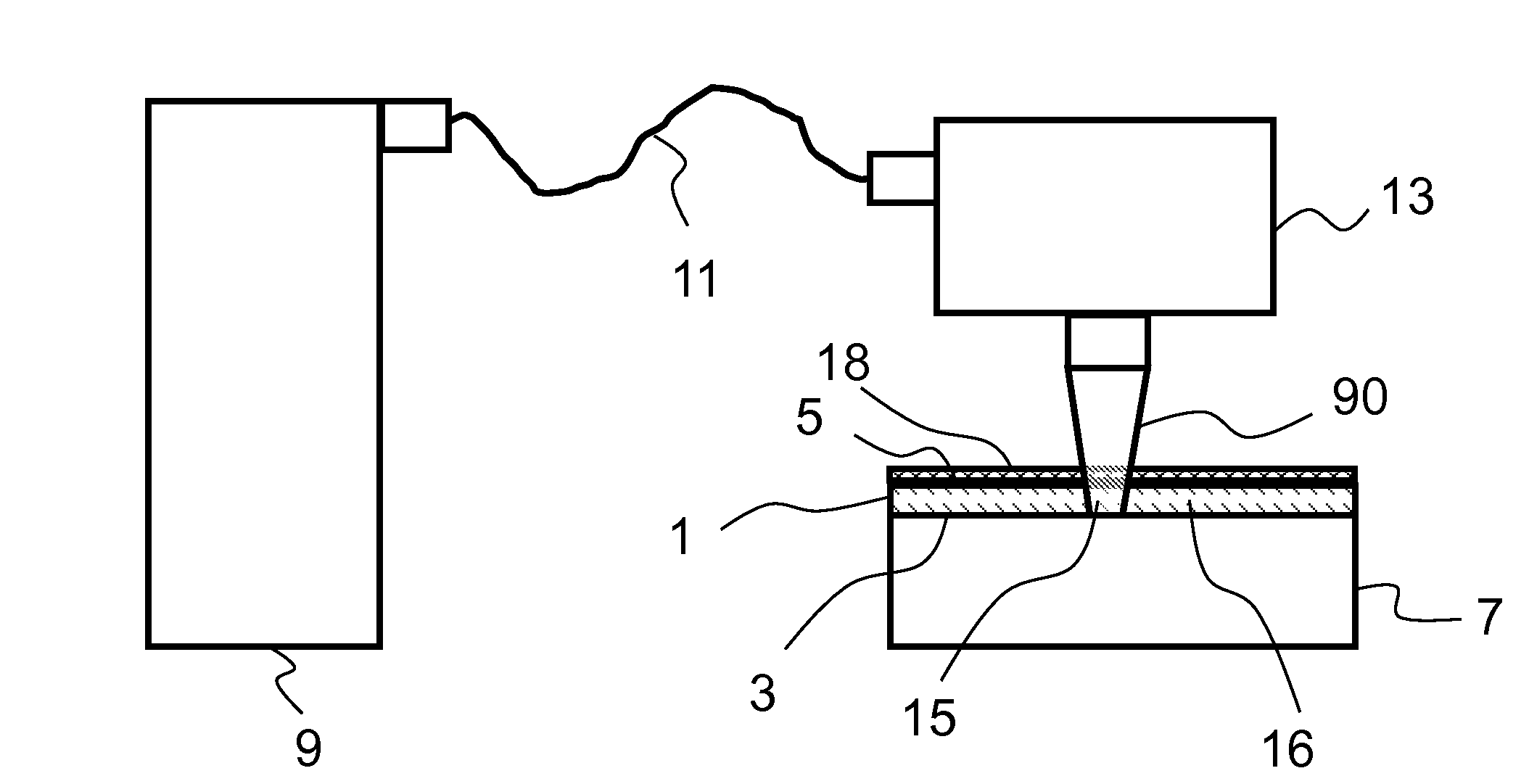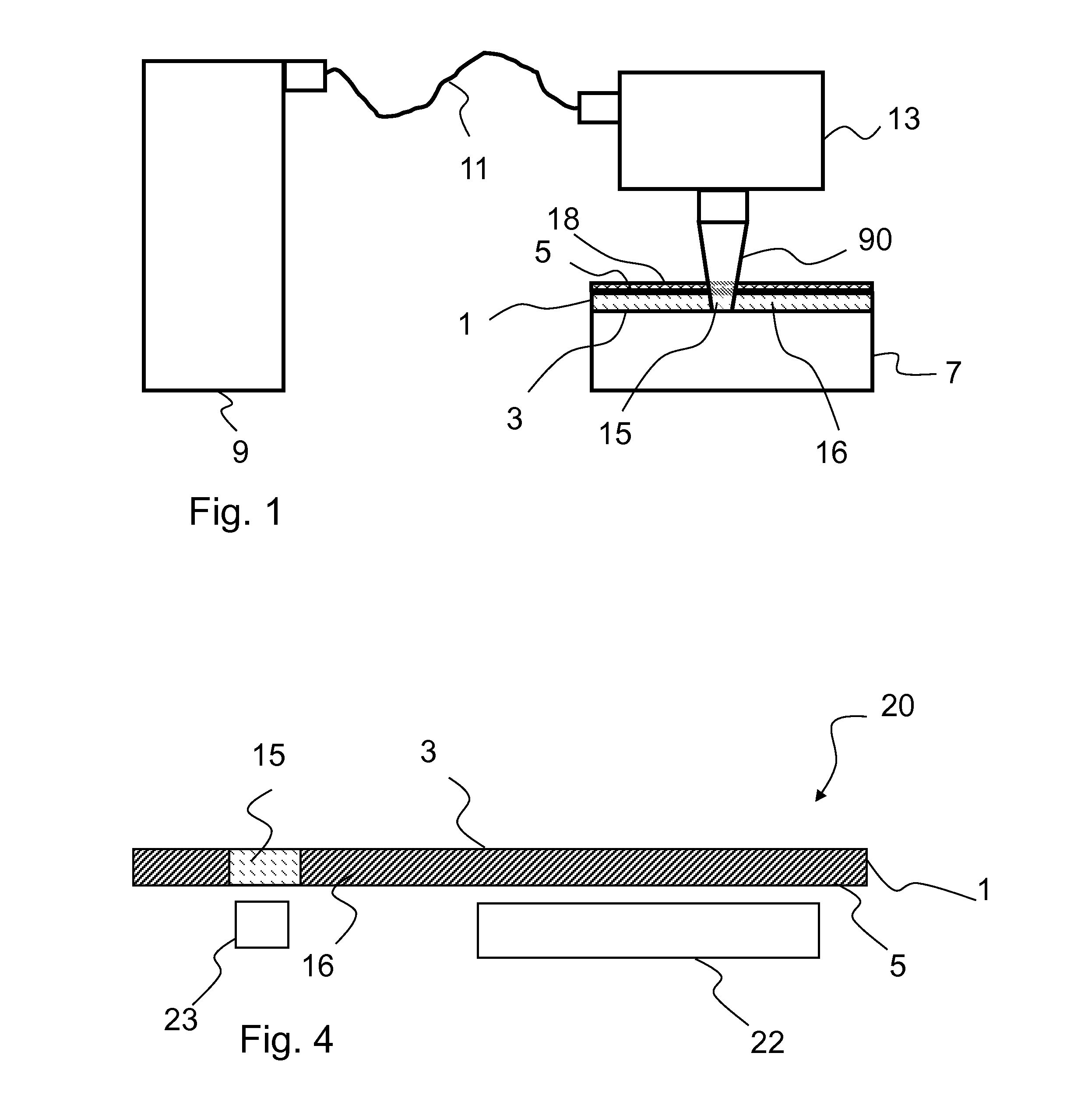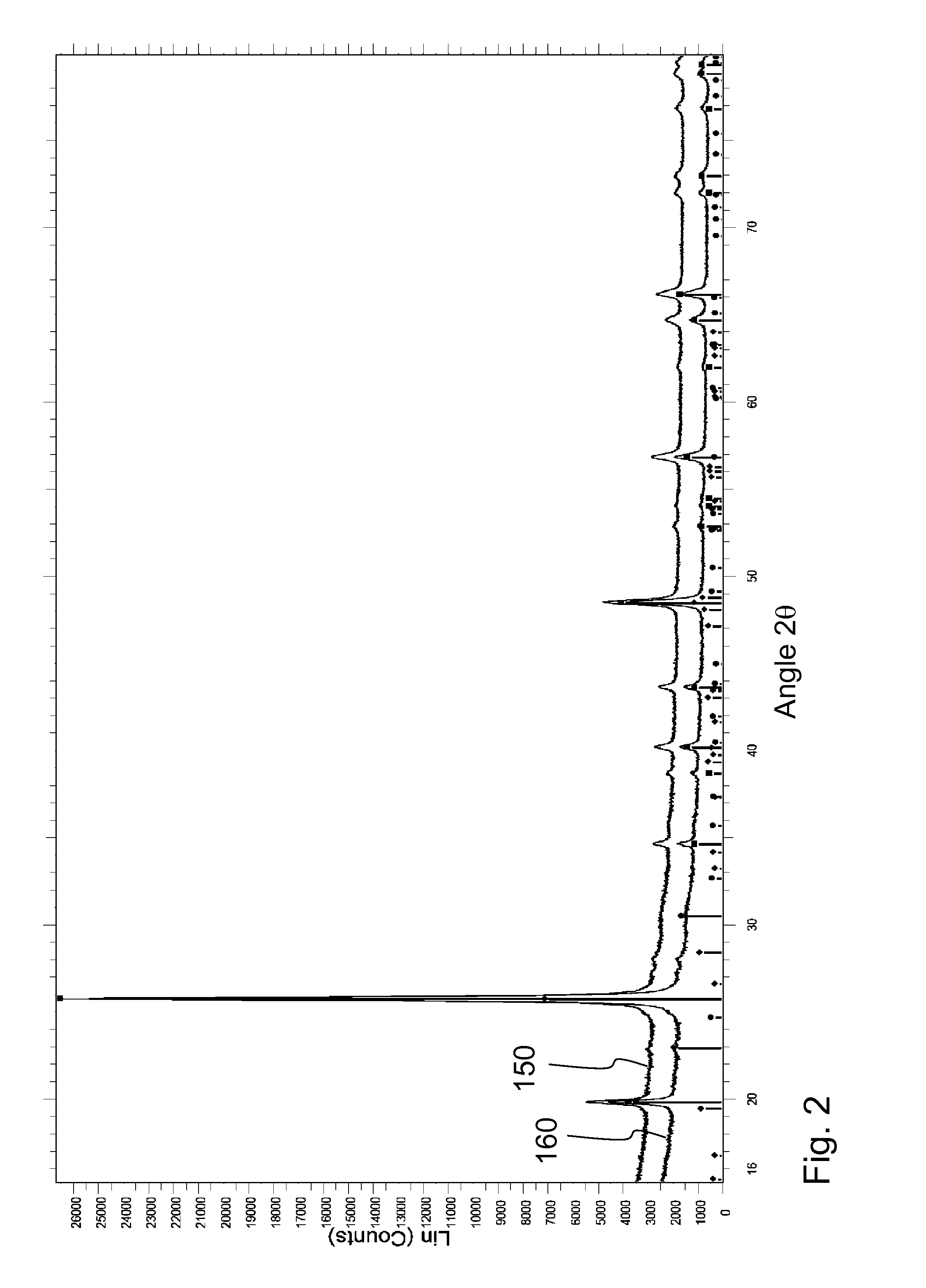Glass ceramic cooking plate with locally increased transmission and method for producing such a glass ceramic cooking plate
a technology of glass ceramic and cooking plate, which is applied in the field of glass ceramic cooking plate with locally increased transmission and production method, can solve the problems of increasing cost and complexity, and not underestimated the cost and complexity of partial coating, etc., and achieves the effect of improving the display capability of volume-colored glass ceramic cooking pla
- Summary
- Abstract
- Description
- Claims
- Application Information
AI Technical Summary
Benefits of technology
Problems solved by technology
Method used
Image
Examples
Embodiment Construction
[0059]The method of the invention for producing a glass ceramic cooking plate with locally modified transmission will now be described in more detail with reference to FIG. 1. A glass ceramic cooking plate 1 is provided in form of a glass ceramic plate 1 which has a first face 3 and a second face 5 and dimensions of 50 mm×50 mm and a thickness of 4 mm. The glass ceramic cooking plate 1 may have a knob pattern on one face, as usual. In particular, the glass ceramic cooking plate is volume-colored by coloring metal ions. Such metal ions may for example be manganese ions, iron, rare earth ions, in particular cerium ions, chromium, nickel, cobalt or vanadium ions. The coloring effect of these ions may depend on an interaction with other components of the glass ceramic. That means, the coloration may be enhanced by interaction with other metal ions, or vice versa, may be attenuated. For example, manganese and iron ions exhibit interaction with tin and / or titanium, which is why preferably...
PUM
| Property | Measurement | Unit |
|---|---|---|
| wavelength | aaaaa | aaaaa |
| temperature | aaaaa | aaaaa |
| depth of penetration | aaaaa | aaaaa |
Abstract
Description
Claims
Application Information
 Login to View More
Login to View More - R&D
- Intellectual Property
- Life Sciences
- Materials
- Tech Scout
- Unparalleled Data Quality
- Higher Quality Content
- 60% Fewer Hallucinations
Browse by: Latest US Patents, China's latest patents, Technical Efficacy Thesaurus, Application Domain, Technology Topic, Popular Technical Reports.
© 2025 PatSnap. All rights reserved.Legal|Privacy policy|Modern Slavery Act Transparency Statement|Sitemap|About US| Contact US: help@patsnap.com



